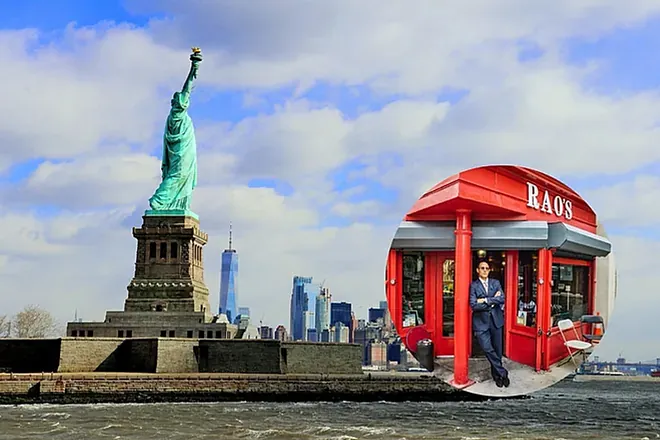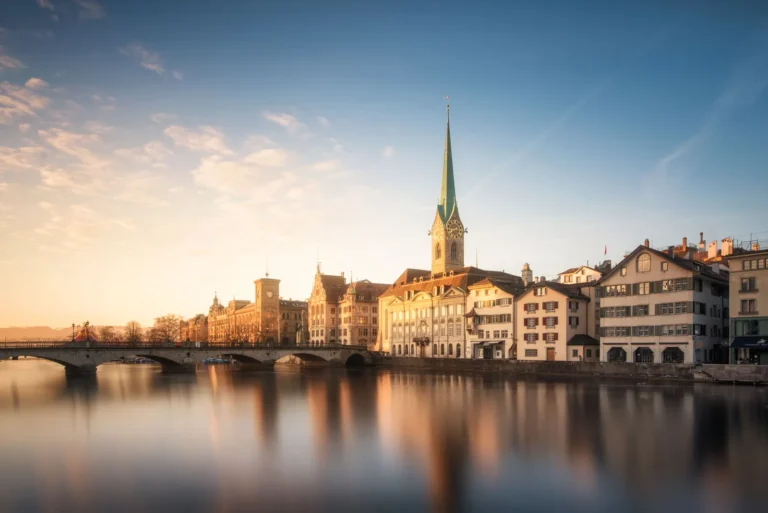Some restaurants you can book with a credit card and a few clicks. Others? They make you wait years, inherit a table, or send a handwritten postcard for the chance of a seat. In these rare dining rooms, luxury isn’t about the price tag—it’s about access.
Here’s a closer look at the world’s 10 most exclusive restaurants, how they came to earn their status, and what it really takes to step inside.

1. The Lost Kitchen – Freedom, Maine, USA
The backstory:
In a tiny town of fewer than 1,500 residents, Chef Erin French built The Lost Kitchen inside an old mill. What began as a small supper club grew into one of the most coveted dining rooms on the planet.
Why it’s exclusive:
- Reservations are only accepted by postcard, mailed once a year.
- Tens of thousands apply, but only a few hundred get “the call.”
- It’s a lottery—no influence, no shortcuts.
What to expect:
- Hyper-local dishes celebrating Maine’s farmland, rivers, and coast.
- A rustic, communal vibe—guests often share tables.
- The meal feels less like a restaurant visit and more like being invited into someone’s home.
Cultural angle:
French herself went from hardship—divorce, bankruptcy, addiction—to becoming one of America’s most celebrated chefs. Dining here is as much about her story of resilience as it is about the food.
2. Rao’s – New York, USA
The backstory:
Opened in 1896 in East Harlem, Rao’s has always been a neighborhood Italian joint—except now it’s one of the hardest seats to score anywhere in the world.
Why it’s exclusive:
- Only 10 tables.
- Tables are “owned” by regulars—passed down through families like property.
- No reservations for the public.
What to expect:
- Red-sauce Italian classics like lemon chicken, meatballs, and seafood salad.
- A dining room decorated with Christmas lights year-round, packed with photos of celebrities and local legends.
Booking tip (if any):
The only way in is knowing someone who “owns” a table—and then hoping they invite you. Even then, repeat visits aren’t guaranteed.
Cultural angle:
Rao’s represents a fading New York—where community, loyalty, and tradition trump modern convenience. In a city where money buys almost everything, Rao’s reminds you that connections matter more.
3. Disfrutar – Barcelona, Spain
The backstory:
Opened in 2014 by three former chefs of El Bulli, Disfrutar quickly became a culinary juggernaut, culminating in being crowned World’s Best Restaurant 2024.
Why it’s exclusive:
- Tables are released once a year, usually booked 12 months in advance.
- Demand skyrocketed after topping the global list.
What to expect:
- Whimsical tasting menus blending molecular gastronomy with Mediterranean flavors.
- Dishes designed to surprise and amuse—think edible “plastic wraps,” caviar lookalikes made from olive oil, or desserts disguised as savory courses.
Cultural angle:
Disfrutar’s rise symbolizes Barcelona’s dominance in modern gastronomy, picking up the torch from El Bulli and keeping Spain at the cutting edge of culinary innovation.
4. House of Prime Rib – San Francisco, USA
The backstory:
Since 1949, this steakhouse has been a shrine to prime rib in its purest form. While other restaurants reinvent themselves, House of Prime Rib has stuck to what works.
Why it’s exclusive:
- Months-long waits for peak dining hours.
- Locals and tourists alike compete for tables, making walk-ins nearly impossible.
What to expect:
- Prime rib carved tableside, served with Yorkshire pudding, mashed potatoes, creamed spinach, and horseradish.
- Dimly lit, old-school décor that hasn’t changed much since mid-century America.
Cultural angle:
In a city known for tech disruption and constant reinvention, House of Prime Rib is the antidote to modern dining fads—proof that tradition still holds power.
5. El Celler de Can Roca – Girona, Spain
The backstory:
Run by the three Roca brothers—Joan (head chef), Josep (sommelier), and Jordi (pastry)—this restaurant has become Spain’s most famous family-run kitchen.
Why it’s exclusive:
- Almost 330 days of waiting for a reservation.
- Constantly in the top five of the World’s 50 Best Restaurants.
What to expect:
- Avant-garde tasting menus mixing Catalan roots with high artistry.
- Wine pairings curated by Josep, considered one of the world’s top sommeliers.
- Dishes like “caramelized olive tree” or “charcoal-grilled lamb with perfumed smoke.”
Cultural angle:
The Rocas have turned their hometown Girona into a culinary pilgrimage site, proving that fine dining can be rooted in family, memory, and place.
6. The Bank Tavern – Bristol, England
The backstory:
From the outside, it looks like a cozy pub. Inside? One of the hardest bookings in the UK.
Why it’s exclusive:
- A multi-year waitlist for Sunday lunch.
- Just a handful of tables, no expansion, no shortcuts.
What to expect:
- Sunday roast that has become legendary—slow-cooked meats, crispy potatoes, and rich gravies.
- Pub atmosphere with no pretension.
Cultural angle:
The Bank Tavern proves exclusivity doesn’t require white tablecloths or Michelin stars. Sometimes, the hardest table in town is in a place that feels like home.
7. Pujol – Mexico City, Mexico
The backstory:
Chef Enrique Olvera transformed Mexican cuisine on the global stage, marrying deep tradition with modern technique.
Why it’s exclusive:
- Reservations sell out months ahead for both the main dining room and the taco omakase counter.
- Culinary tourism in Mexico City drives global demand.
What to expect:
- The famous Mole Madre, Mole Nuevo—a sauce aged for over 2,500 days alongside a freshly made mole.
- Tacos elevated to art form.
- Menus that highlight indigenous ingredients and ancient cooking methods.
Cultural angle:
Pujol isn’t just a restaurant—it’s a reclamation of Mexican food as fine dining, showing the world that heritage cooking belongs on the global stage.
8. Damon Baehrel – Earlton, New York, USA
The backstory:
Hidden in the woods two hours north of Manhattan, Damon Baehrel runs his namesake restaurant entirely by himself.
Why it’s exclusive:
- Wait list runs a year or more.
- Only one seating per night, for fewer than 20 guests.
What to expect:
- Ingredients grown, foraged, or made on Baehrel’s 12-acre property—flour from acorns, cheeses aged in-house, syrups from local trees.
- A meal that feels like stepping into a secret world.
Cultural angle:
This is farm-to-table taken to the extreme—one man, one farm, one meal. It feels less like dining out and more like joining a private ritual.
9. Noma – Copenhagen, Denmark
The backstory:
René Redzepi’s Noma redefined fine dining, pioneering the New Nordic movement and inspiring restaurants worldwide.
Why it’s exclusive:
- Reservations sell out in minutes when released.
- Tables are sometimes resold on secondary markets for over $1,300.
What to expect:
- Seasonal menus: game and forest foods in autumn, seafood in winter, vegetables in summer.
- Dishes that look like art installations—ants on shrimp, moss crisps, edible flowers.
Cultural angle:
Though Noma announced it would close as a full-time restaurant in 2025, its influence will echo for decades. Dining here isn’t just about food—it’s a piece of culinary history.
10. La Mercerie – Marseille, France
The backstory:
Run by British chef Harry Cummins and sommelier Laura Vidal, La Mercerie has turned into one of Marseille’s hottest tickets.
Why it’s exclusive:
- Small space with very limited covers.
- Global travelers and locals alike compete for tables.
What to expect:
- Mediterranean small plates with bold flavors.
- A casual bistro feel that hides how carefully crafted each dish really is.
Cultural angle:
La Mercerie captures the soul of Marseille—unpretentious, vibrant, and deeply rooted in the region’s produce and culture.
Why Exclusivity Matters in Dining
It’s not just about scarcity. These restaurants tap into deeper cultural desires:
- Belonging: Rao’s tables feel like inherited status symbols.
- Patience: Damon Baehrel or The Lost Kitchen test how far diners will wait for meaning.
- Tradition vs. reinvention: House of Prime Rib celebrates constancy; Disfrutar thrives on surprise.
- Identity: Dining at Noma or Pujol isn’t just a meal—it’s a statement about taste, access, and cultural awareness.
Tips for Chasing These Reservations
- Know the system: Postcards for The Lost Kitchen, annual drops for Disfrutar, connections for Rao’s.
- Plan 12+ months ahead: For Spain’s big three—Disfrutar, El Celler, and Noma.
- Consider off-hours: Lunch vs. dinner, weekdays vs. weekends.
- Join mailing lists: Some restaurants give subscribers early access.
- Be flexible: Last-minute cancellations do happen, especially at U.S. restaurants.
- Leverage networks: Especially in New York, where introductions matter.
The World’s Most Exclusive Restaurants
| Restaurant | Location | Booking Method | Average Wait | Cost Range (per person) | Signature Element |
|---|---|---|---|---|---|
| The Lost Kitchen | Freedom, Maine, USA | Postcard lottery, once per year | Lottery-based, months–years | $200–$250+ | Farm-to-table in a restored mill |
| Rao’s | New York, USA | Invitation only, tables “owned” | Impossible without invite | $100–$150+ | Tables passed down like heirlooms |
| Disfrutar | Barcelona, Spain | Online release, 12 months ahead | 12 months | $300–$350+ | Avant-garde Mediterranean menus |
| House of Prime Rib | San Francisco, USA | Online/phone, booked months ahead | 2–3 months+ | $90–$120 | Classic prime rib carved tableside |
| El Celler de Can Roca | Girona, Spain | Online, annual opening | ~330 days | $350–$400+ | Family-run, experimental Catalan cuisine |
| The Bank Tavern | Bristol, England | Online, limited slots | 1–4 years (for Sunday roast) | $40–$60 | Legendary Sunday roast |
| Pujol | Mexico City, Mexico | Online, booked months ahead | 2–4 months | $150–$200 | Mole Madre aged 2,500+ days |
| Damon Baehrel | Earlton, New York, USA | Direct request via website | 1 year+ | $350–$400+ | One chef grows & cooks everything |
| Noma | Copenhagen, Denmark | Online drop, sells out in minutes | Months–1 year | $500–$600+ | Seasonal, world-changing menus |
| La Mercerie | Marseille, France | Online/phone, very limited covers | Weeks–months | $80–$120 | Intimate bistro with bold Mediterranean flavors |
Exclusivity in dining isn’t just about scarcity—it’s about storytelling, tradition, and cultural capital. Whether it’s mailing a postcard to Maine, waiting a year in Spain, or being handed an invitation in East Harlem, these experiences prove that sometimes the most luxurious thing isn’t paying the bill—it’s getting in at all.





